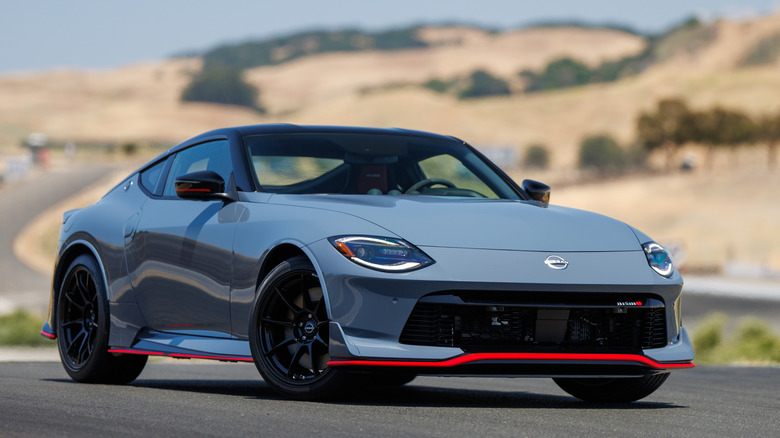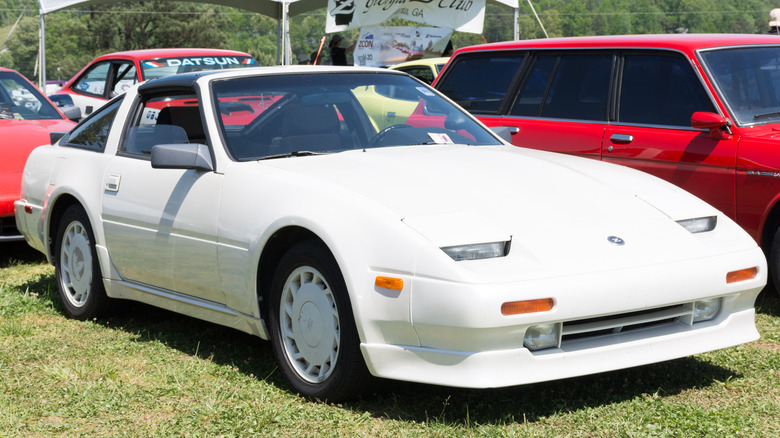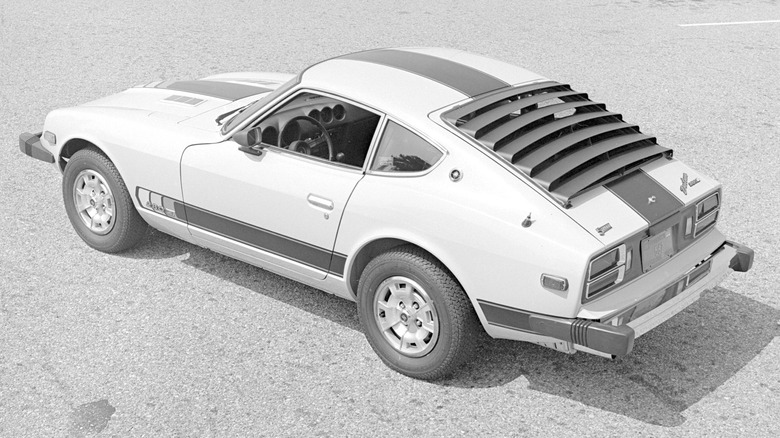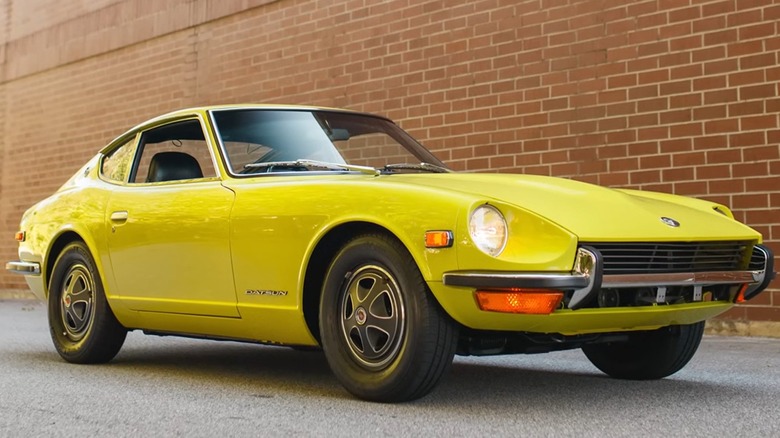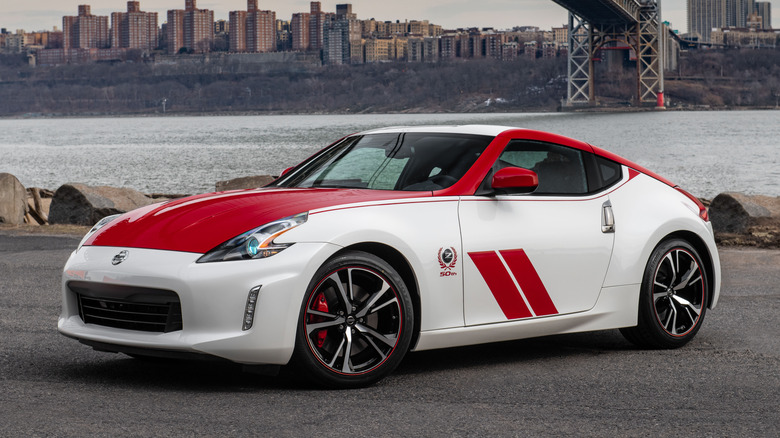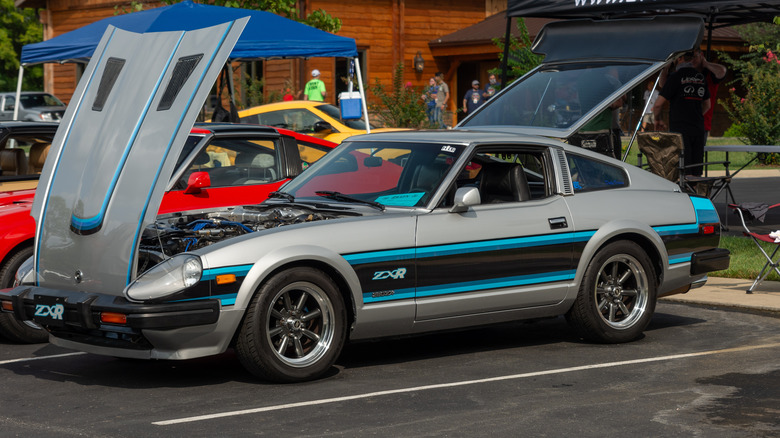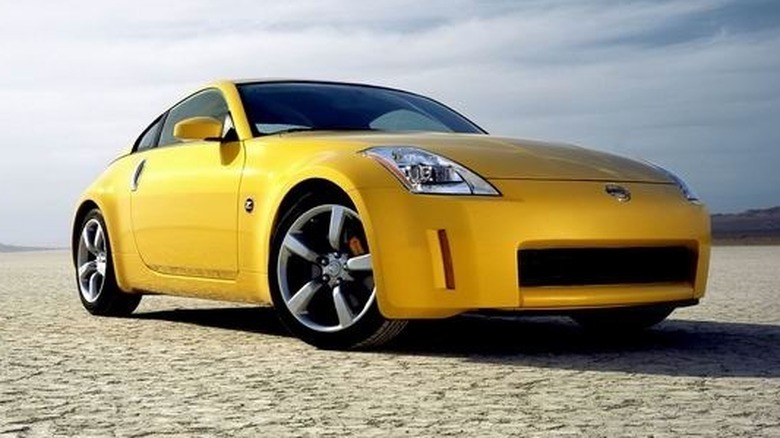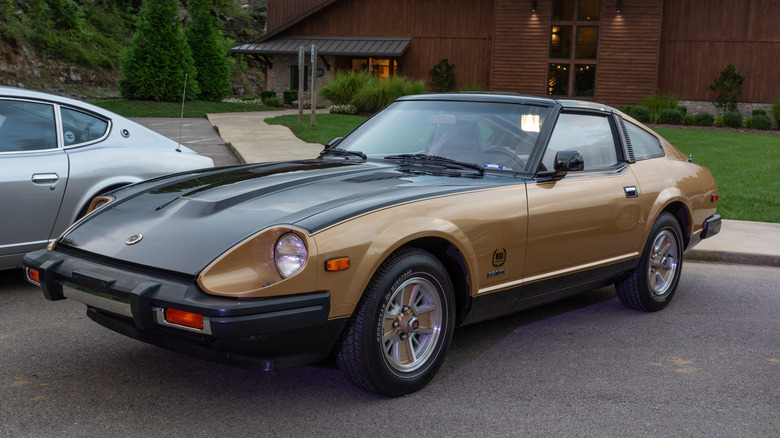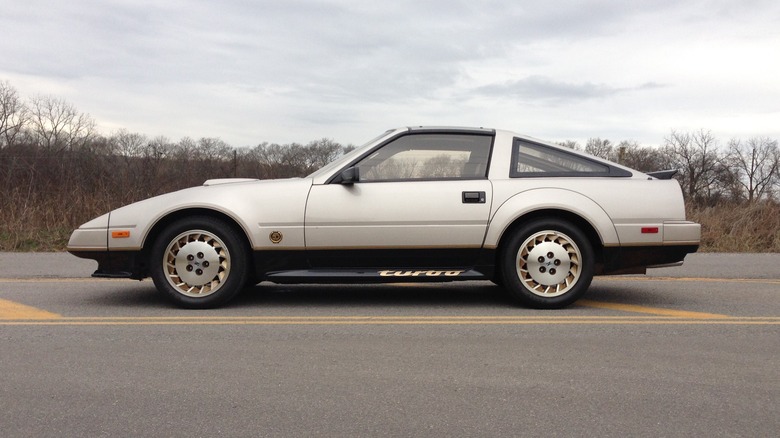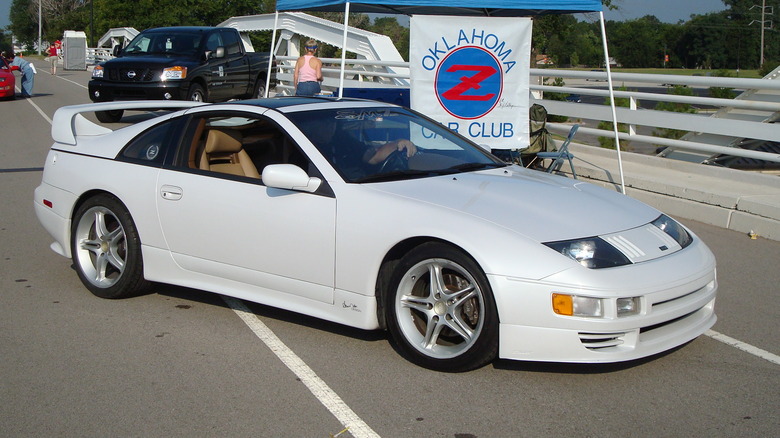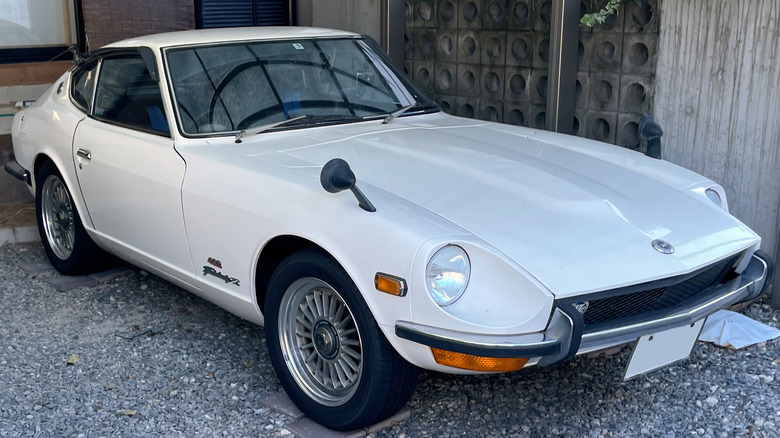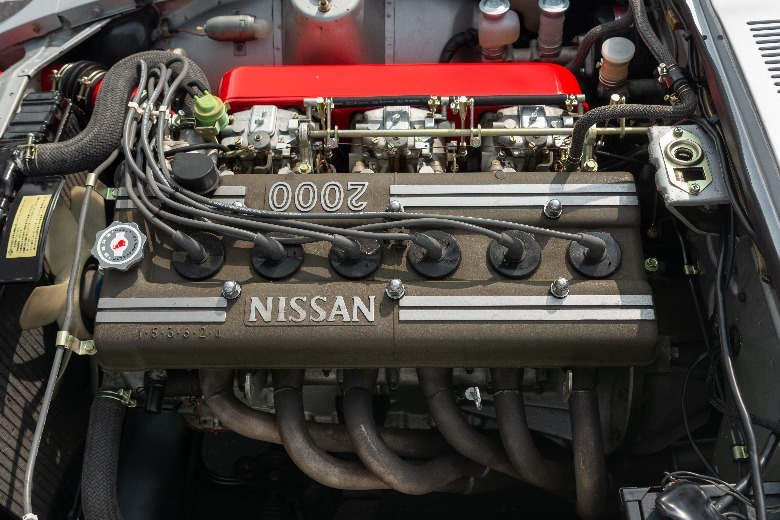10 Of The Best Datsun Nissan/Z Special Editions, Ranked
Nissan has taken the wraps off of the latest addition to the Z lineup with the unveiling of the 2024 Nissan Z NISMO. Named for Nissan's motorsports arm, the Z NISMO features power and handling enhancements over the already excellent Z that debuted last year.
The Z model debuted in 1969 with the 240Z and was an instant success. Throughout the 53-plus years since, the familiar two-door sports coupe has endured a number of model name changes, made necessary as the engine size had long been a part of the model's nomenclature. The car even survived the changing of brands, as what was once Datsun here in North America and elsewhere transitioned to the Japanese corporate name of Nissan in the early 1980s.
Whatever you call them, Nissan has long seen value in offering something just a little bit different with certain limited Z-cars. Here are our ten favorite Z special editions.
10. 1988 300ZX Shiro Special
Throughout the '80s, the Z became somewhat less of a hardcore sportscar and more of a quick grand tourer. The Z31-chassis 300ZX, which debuted in 1984, abandoned the traditional inline-six-cylinder engine for a more modern three-liter V6. Where the original Z targeted the popular British roadsters of the early '70s, the 300ZX was aimed at more affluent customers who might otherwise be shopping for Corvettes.
In 1988, a limited number of 300ZX Turbos were offered as the Shiro Special — 300ZX SS for short. The Shiro Special was painted a blinding Pearl White with matching monochromatic 16" white wheels. Unlike most ZXs of the time, even the door handles were painted white, though the metallic trim around the windshield and window frames was blacked out as was typically found on all turbocharged Z31s. Inside, the interior featured black cloth Recaro seats, and the dashboard had white-faced dials replacing the usual black.
Reports vary, but most agree that a scant 1,002 Shiro Specials were brought to the US, with another 75 destined for the Great White North — Canada.
9. 1977 280Z ZZZAP
The first limited-edition Z to appear in the US wasn't exactly a performance vehicle. Emissions regulations had strangled the power of the 2.8-liter engine, while safety requirements added additional weight in the form of huge bumpers fore and aft. The 280Z was straying from the lightweight performance car it once had been, so Nissan decided to program some additional excitement into the Z with the first-ever video game collaboration.
That's right. While racing games such as "Forza" and "Gran Turismo" have become commonplace for their deep integration and hyper-realistic graphic representation of performance cars, the 1970s were technologically challenged, and home gaming systems were not at all common. Arcade games, on the other hand, were all the rage, and Bally/Midway produced a racing game called "Datsun 280 ZZZAP" in concert with Datsun. Gameplay was primitive but proved popular in the days before "Pole Position."
Datsun produced its own 280 ZZZAP edition, painted bright yellow with multicolor stripes on the hood and sides and fitted with rear window louvers to help minimize the sauna effect of the rear hatch glass in the days before highly effective air conditioning. 1,000 of these ZZZAP Edition cars were sold.
8. 1996 Vintage Z Factory Restoration
Japan's bubble economy of the 1990s caused a significant change in the value of the yen, which led to matching changes in the price of exported goods. The Z32-chassis 300ZX debuted for the 1990 model year with a base price of around $30,000, but by 1996 the prices were climbing much closer to $50,000 for virtually the same car. That year, Nissan stopped importing the 300ZX.
That didn't mean the end of the Z, however. Nissan couldn't let all of the heritage and goodwill in the iconic sportscar go to waste, so they created the Z Store. The program started with certain Nissan dealers selling refurbished Z32-chassis 300ZXs with a factory warranty. But the second part of the program went much further, as these few specific dealers began selling factory-authorized restorations of early S30-chassis 240Zs from the early 1970s.
A few specialist restoration shops authorized by Nissan worked to restore these 240Zs to as close to original as possible. The few changes included were to modern brake pad/shoe linings without asbestos and a slightly different tire dimension as the original tire sizes were no longer made by Bridgestone. The restored 240Zs got plenty of attention — and at a price of well under $30,000, the price was attractive — but while Nissan originally expected to sell around 200 per year, fewer than 40 were ever actually restored and sold.
7. 2020 370Z 50th Anniversary Edition
Nissan loves birthday parties. Scroll through this list and you'll see a number of Anniversary Edition Zs that have been offered over the years. In 2020, Nissan launched the 50th Anniversary 370Z at that year's New York International Auto Show.
The 370Z 50th Anniversary Special Edition was mechanically identical to other 370Zs offered at the time, but the package paid homage to the first Japanese sports car to be truly successful in North America both in the showroom and on the racetrack. The distinctive paint scheme and markings are a callback to the racecars built by Brock Racing Enterprises (BRE), a legendary Datsun race team in the 1970s led by famed designer and racer Pete Brock. The pair of wide diagonal stripes on each door has long been known as BRE stripes, as they featured heavily on every BRE racer back in the day.
The 50th Anniversary Special Edition was offered in two colorways — the red over white seen here and a handsome black over silver finish.
6. 1979 280ZXR
1979 marked the first major change to the Z. Specifically, what was once the 240Z, 260Z, and 280Z — all built upon the same S30 chassis that debuted in 1970 — became the 280ZX. X, in this case, marked a change from a more traditional sportscar to a more luxurious GT car. The car was longer, lower, heavier, and had much more comfortable interior appointments.
However, Datsun and Nissan still used racing as a major marketing tool, and the 280ZX — powered by the same 2.8-liter inline six as the 280Z — would continue on the racetrack as before. The Electramotive racing team found that the new 280ZX needed some aerodynamic help at high speeds. A rear spoiler was needed, but the rules at the time for IMSA racing required that any change on the race car had to be homologated with at least 1,000 copies on the street.
Thus the 280ZXR, a special edition created to make the black rubber "whale-tail" spoiler legal for use on the race track. It was a $399 option package over a regular 280ZX and could only be had in silver with the black and two-tone blue stripes seen here. The ZXR whale-tail spoiler was successful, however, as Don Devendorf of Electramotive went on to win the IMSA title that year.
5. 2005 350Z 35th Anniversary Edition
While the Z left these shores (at least in new, unrestored form) when the 300ZX was discontinued in 1996, enthusiasts still clamored for performance from Nissan. After all, the 2001 film "The Fast And The Furious," while featuring hero shots of Toyota Supras, Honda S2000s, and exploding Mitsubishi Eclipses, had a number of Nissans scattered throughout. A couple of guys on Dom's (Vin Diesel) crew drove Nissans, including a slammed Maxima and an R33-chassis Skyline. Hollywood and the streets were calling for Nissan to bring them something good.
The 2003 350Z finally shrugged off the superfluous luxury "X" badging that had tainted the Z since the 1979 280ZX, giving drivers a 287hp 3.5-liter V6-powered sportscar that was relatively spartan and lightweight. In 2005, another birthday rolled around and Nissan gave the 350Z a few extra horsepower with the candles, making an even 300hp. Exclusive wheels and a small front spoiler added a bit of charm to the 350Z 35th Anniversary Edition, sold only in yellow, silver, or black.
4. 1980 280ZX 10th Anniversary
Here's the first-anniversary edition Z to hit the streets, the 280ZX 10th Anniversary Edition. There were no performance upgrades to the 280ZX, but the unusual paint scheme was a definite product of the disco era. There were 2,500 of these 10th Anniversary Edition models painted in this black over gold finish, with two-tone gold and silver wheels and fitted with raised white-letter tires. Another 500 were sold in black over red, with bright red on the same four-spoke wheels.
These were plush, comfortable cruisers, and while they could still be fun to drive, with only around 135hp to pull around a 2,800lb coupe, they were never fast — quarter-mile times were in the seventeen-second range. Of course, that was the sports car market of the early 1980s, as the double whammy of a stagnant economy and high fuel prices caused by the energy crisis clamped down on the fun that could be offered by an automaker.
That said, Datsun hinted at a different kind of fun in marketing the 280ZX 10th Anniversary Edition with a 30-second television spot heavily laden with era-appropriate music, imagery, and innuendo — a video that has lived on in internet infamy.
3. 1984 300ZX Turbo 50th Anniversary Edition
You might be asking yourself what kind of funny math is involved in a 50th Anniversary appearing just four years after a 10th Anniversary? While you might chalk it up to whoever created the TV spot for the 10th Anniversary Black Gold 280ZX, the birthday celebrated with the 1984 Nissan 300ZX 35th Anniversary Edition is not of the Z, but of Nissan beginning to sell cars in 1933.
Still, 1984 revolutionized the ZX lineup with the all-new 300ZX. The styling was much more angular than the S30-chassis Z or the S130-chassis 280ZX, and mechanically the Z31-chassis 300ZX was much changed as well. A new VG30DE overhead-cam V6 replaced the classic L28DE inline-six. Naturally-aspirated models had 160hp, while the turbocharged cars had an even 200hp. Remember, in 1984 that was a lot of power.
The 35th Anniversary 300ZX took on some visual changes, with flared fenders, lower body skirts, and unique wheels. The silver and beige over black was the only color offered.
If you take a good look at the rear decklid of any 1984 300ZX — or the 1983 280ZX for that matter — you'll notice badging for both Datsun and Nissan. This was the transition time between the two brands in North America, and consumers who didn't read car magazines religiously might not have known what a Nissan was. Marketing was all over it, too, with every ad and commercial ending with the tagline "The Name Is Nissan."
2. 1995 SMZ
Steve Millen was a racer originally from New Zealand and had been hired to race the Z32-chassis 300ZX in the early 1990s in IMSA races. He won a number of big races with the Z, including the 24 Hours of Daytona, 12 Hours of Sebring, and the 24 Hours of LeMans. This success led his aftermarket parts company, Stillen, to offer a number of styling and high-performance add-ons for the 300ZX.
1995 would have been the 25th anniversary of the Z, but as the market cooled for high-performance Japanese sports cars Nissan didn't produce a special edition. That was up to Stillen, who unveiled the SMZ — the Steve Millen Z, which was offered as a completed car available through Nissan dealerships for around $60,000.
A number of performance tweaks increased power from the twin-turbocharged 3.0-liter V6 to 365hp, while larger wheels and tires improved handling. The styling was further tweaked with a body kit, including a large rear wing.
[Featured image by thinktk via Flickr | Cropped and Scaled | CC BY 2.0]
1. Fairlady Z432 and Z432R
It's said that the president of Nissan fell in love with a character played by Julie Andrews when he visited New York in the 1950s. Thus besotted, Nissan chose to honor the Lerner and Loewe musical "My Fair Lady" by naming future sports cars the Fairlady. This stuck through the initial run of roadsters in the 1960s, and when the S30 chassis appeared in 1970, it became the Fairlady Z. Yutaka Katayama, president of Nissan's North America arm, felt that the Fairlady label wouldn't play well in the US, and thus the cars were simply badged with a code including the displacement of the engine and the letter Z — thus the 240Z. Still, the Fairlady badge stuck in Japan.
While the US market only saw a single 2.4-liter inline-six cylinder with a single overhead cam — the L24 — Japanese buyers had additional choices. Most notably, the S20 engine that was also used in the legendary Skyline GT-R made an appearance in limited numbers.
Nissan released the Z432, powered by the two-liter twin-cam S20, selling around 400 cars. The Z432 package was named for the four valves per cylinder, three carburetors, and two cams on the high-revving, high-performance inline-six. A further development, the Z432R, was sold as a homologation special with lighter doors, hood, and wheels.
The Z432 and Z432R were only sold in Japan, but a few have made their way overseas in recent years. These sought-after specials have become incredibly valuable, as a Z432R sold a few years ago at auction for $800,000.
[Image by Tokumeigakarinoaoshima via Wikimedia Commons| Cropped and Scaled | CC BY-SA 4.0]
